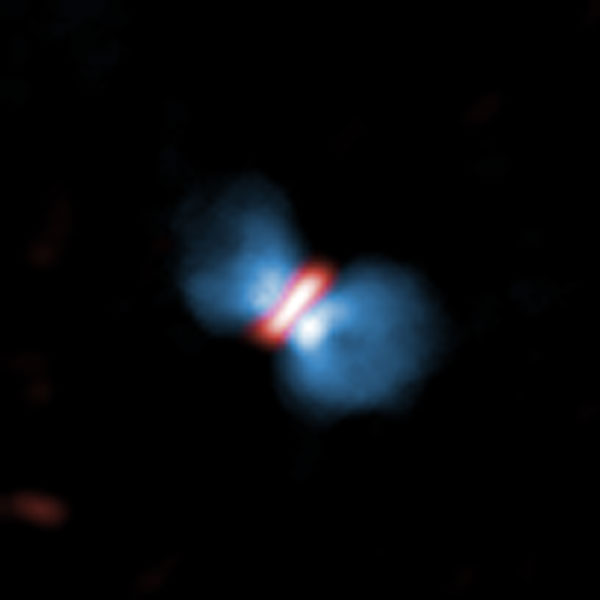
Growth of Massive Baby Star
Jul. 25, 2017

(L-R) Yuko Matsushita and Dr. Masahiro N Machida
A research group comprised of Japanese institutions such as the National Astronomical Observatory of Japan and Kyushu University has successfully observed the growth of a massive baby star.
Though massive stars play a crucial role in the universe, their formation process had been a mystery for many years. By using the Atacama Large Millimeter/ submillimeter Array (ALMA), the largest radio telescope in the world, the group discovered that the star called Orion KL Source I has been developing with bipolar gas outflows.

Masahiro Machida, associate professor at the Faculty of Science, Kyushu University, said, “The study unveiled the formation process of a massive star and the driving mechanism of outflow driven by a massive baby star. My student and I have been contributing to the research by theoretical interpretation of the observation result. I am pleased to hear that our interpretation became a critical piece of evidence for the result.”
The report was published in Nature Astronomy on June 13, 2017.